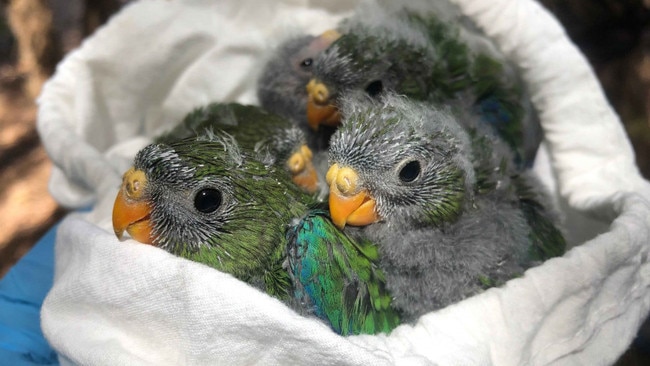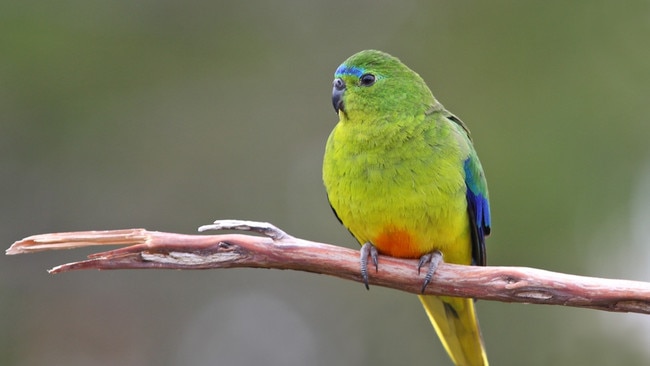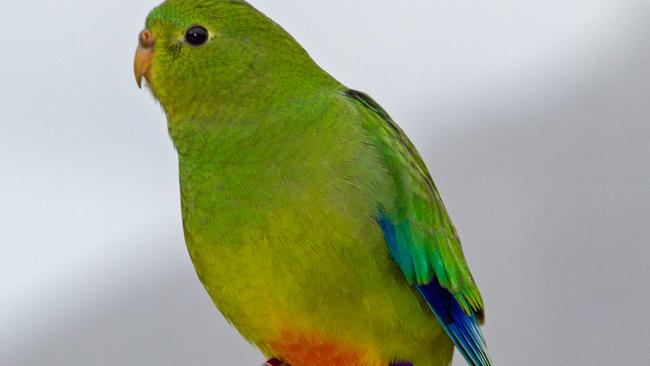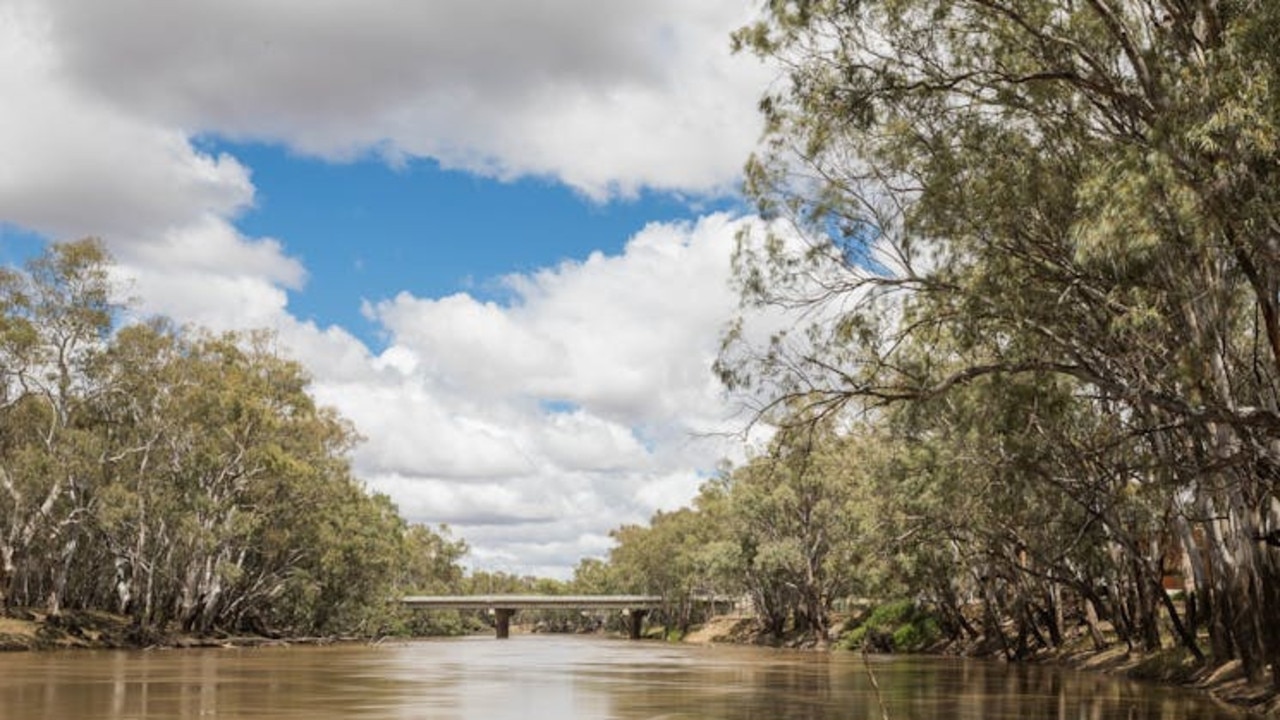Scientists race to save one of Australia’s rarest birds, the orange-bellied parrot
The race is on to save one of Australia’s rarest and critically endangered birds that is at risk of dying during migration.

Scientists are racing to determine how and why one of Australia’s rarest birds is dying off young and at an alarming rate.
Orange-bellied parrots, which traditionally breed in Tasmania before migrating to Victoria for winter, are critically endangered – the last step before extinction.
Just three females returned to their breeding grounds in 2016 due to devastatingly low juvenile survival rates. Researchers at the Australian National University (ANU) said this represented the lowest point of a decades-long decline.
Now they’re scrambling to find out why the rare bird is failing to survive migration.
While conservation efforts have boosted the breeding success of parrots in the wild, at least 80 per cent of juveniles born in their sole breeding ground in Tasmania die during migration or winter.
“Our results are very worrying,” lead author Dr Dejan Stojanovic said.
“We found over time, survival of juvenile parrots has dropped from 51 per cent in 1995 to only 20 per cent in recent years.”
As part of the study, ANU researchers used data collected by the Tasmanian Department of Primary Industries, Parks, Water and Environment to examine the survival of orange-bellied parrots over 22 years.

More orange-bellied parrots are born in the wild thanks to recovery efforts, but the benefits are vastly reduced by “unidentified and unaddressed” threats during migration and winter, Dr Shannon Troy, study co-author and lead wildlife biologist for the DPIPWE Orange-bellied Parrot Tasmanian Program, said.
Academics suspect the flight over Bass Strait between Tasmania and the Australian mainland takes a severe toll on inexperienced juveniles during their first attempt at migration.
The challenge is heightened by the dwindling flock size and then survivors are forced to find a suitable habitat in Victoria for winter.
“Migratory animals need protection from multiple different threats at different times and places,” Dr Stojanovic said.
“Unfortunately, the main threats to this species are the most difficult to identify and fix, and our study shows that what's been done to date hasn’t corrected the declining survival of juvenile orange-bellied parrots.”
Things did improve last year, with 23 birds returning to their breeding grounds in Tasmania, including 13 females.
But population size remains dangerously small.
The Tasmanian Government recently invested in a new breeding program and centre based near Hobart.

“The cornerstone of population recovery efforts has been the release of captive-bred birds to supplement the wild population and boost breeding and fledging success in the wild,” a statement on the Government website reads.
The Government pledged $2.5 million to deliver a fit-for-purpose captive breeding facility – which officially opened in July 2019 – at Five Mile Beach.
The facility allows for birds (up to 48 breeding pairs) to be bred before being released back into the wild.
However, Dr Troy said determining why birds were failing to survive migration and winter was part of the solution to preventing extinction.
“This study shows that new, targeted conservation efforts are needed to identify and address threats on migration and the mainland,” she said.
Australia has one of the worst extinction rates in the world, and fixing decades of population decline in orange-bellied parrots is extremely difficult and, despite our best efforts, may not be successful, according to Dr Stojanovic.
“We hope our study encourages others to think holistically about the way that we deploy conservation efforts for migratory species so that good work at one time and place isn't undone when animals migrate away,” he said.
The total captive-bred releases during the 2019-2020 season has exceeded 100, but Dr Stojanovic said given the poor survival rate it was hard to know how many were left in the wild.
The birds are anticipated to return to Tasmania between September and November.


